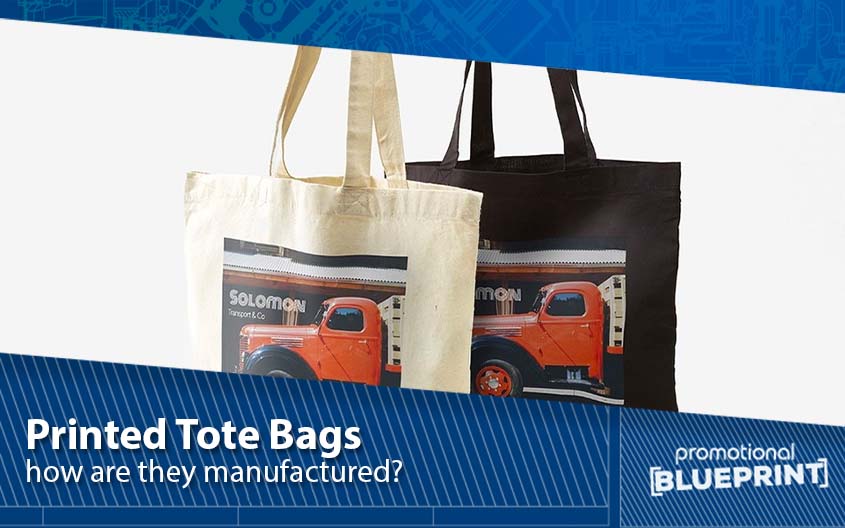
Is there a better shopping assistant than reusable, eco-friendly custom tote bags? We can also use them to carry bulky office necessities from home to work as well as pack all the clothes that can’t fit in our suitcases for a dream vacation. Over the years, we seem to have grown so used to totes that disposable bags are becoming a thing of the past.
But how did our favourite carrying items come into being? What’s the history of totes, and which manufacturing processes do companies use to produce them today? Let’s delve into all things tote and get to know these bags better.
A Brief History of Totes
According to some accounts, the word tote has existed since the 17th century. However, that doesn’t mean our favourite carrying bags have been around that long. Still, they seem to owe their origin to the old Swahili word “tuta” meaning “to pile up and carry.”
As for the promotional bags themselves, they came much later — around 1886. As the story goes, a newspaper owner called Jasper Meek needed something to keep his printing presses running when there were little to no customers. He came up with the idea to print the name of a local shoe store on burlap bags.
Then, he would give away these bags for free to all the customers who came to visit his store. Thus, both Meek and Cantwell, the shoe store owner, seemed to profit. At last, promotional tote bags were born — and haven’t left the advertising stage since.
How Do Companies Make Totes Today?
There’s no denying how popular tote bags are, both as practical tools and promo items. But even if we carry them around all day long, we may not be too sure about how they are designed. So, let’s dive deeper into each of the tote-bag manufacturing steps.
1. Step One
The first step to designing a tote bag is determining its size. Today, the tote bag market features all kinds of tote sizes, ranging from small to extra-large ones. Once the producer has chosen the perfect dimensions for their tote, it’s time to make the first cuts.
Thus, the manufacturer takes a piece of fabric and cuts out the desired size of the sheet. The important thing here is not to throw away any leftover fabric. As it goes, it comes in handy during the next steps — and quite literally so.
2. Step Two
The small pieces of fabric the manufacturer saves for later serve their main purpose in the second step. Here, the designer uses them to cut out two long strips of about 16″. You may have guessed it by now — the straps will provide handles for our totes.
Still, the designer can choose to make the handles using a different type of fabric. Alternatively, they can even opt for a different handle colour to make the tote pop out more and make it more appealing. The only thing the manufacturer should never joke with is the equal size and durability of the said handles.
3. Step Three
The third tote-bag manufacturing step is about securing the main piece of fabric. Thus, the producer will try to manipulate the bottom and side section of their future bag. First, they will fold the main fabric and maintain enough access to all the open edges.
Then, the manufacturer pins the sides of the fabric together to secure it. In the beginning, they do this using pins that would ensure enough durability. Later on, they move on to stitching the folded edges, after which they’re free to remove the pins.
4. Step Four
Once the sides of the bag are stitched together, the manufacturer goes to the next step. This part of the tote production process is crucial for creating long-lasting designs. Here, the producer tries to secure all the sections for crucial durability.
Thus, they pay special attention to sewing the corners of the tote bag — especially the bottom ones. Not following this step would likely result in a tote that won’t be strong enough to carry all our heavy belongings. Such bags will tear and rip more easily and won’t provide enough security for our valuables.
5. Step Five
In the end, the producer needs to repeat the previous step, only on the handle section. As it goes, the handles’ durability is just as important as that of the bag’s main body fabric. If handles aren’t strong enough, they might tear, making our tote quickly slip out of our hands.
To avoid this, the manufacturer pays attention to sewing the handles properly. Only with seamless stitching will they make the totes that are ready to endure whatever we may burden them with.
Related content:
Promotional Tote Bags – A Corporate Gift That Keeps on Giving
Final Thoughts
Although they’ve been around for about 200 years, tote bags have managed to become our closest associates. Today, we use them for grocery shopping, packing, and transporting our valuables from one place to another. And in case we’ve started to take them for granted, we should know that producing a tote bag isn’t as easy as we may think. The manufacturing process takes much time and dedication to create a tote bag in which all our possessions will be safe.
You may also like:
Upcycling Jute and Cotton Bags: 5 Fresh Ideas to Try Out
Explore our range of branded bags including custom shopper bags, logo cotton bags, printed drawstring bags, and branded paper bags. In doing so, you can provide your staff with a tool they can use every day whether they’re in or out the workplace. Contact us now at 0800 0148 970 or simply email us today if you have any questions regarding our selection. Our team will be happy to help you choose and order the perfect personalised bags for your faithful employees!






